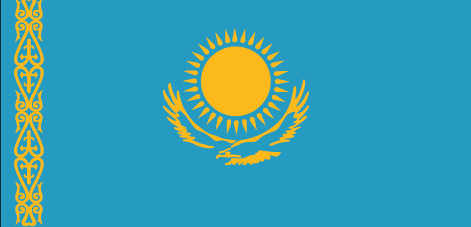The snow leopard is an official symbol of Kazakhstan, which was a suggestion of President Nursultan Nazarbayev. Thus, the symbolism of this species is an important argument and an incentive in the goal to save it for posterity.
Numerous organizations, sports and tourism clubs, products and brands in Kazakhstan are using an image of a snow leopard. “Irby” was an official mascot of the Asian Winter Games “Asiada-2011”, held in Almaty and Astana.
Virtually all of the major rivers of Kazakhstan and their numerous tributaries originate from the glaciers in snow leopard habitat within the country limits or in the neighboring countries: China (Ili, Irtysh), Russia (Bukhtarma, Katun) and Kyrgyzstan (Naryn-Syr Darya, Talas, Chu) and others. All in all, there are 2724 glaciers in the mountains of the Republic with an area of 2033 km². The total volume of ice includes 100 km³ of fresh water, which is about twice as much as an annual river flow formed within Kazakhstan.
Rivers feed and make fertile valleys, where half of the population is located. Agricultural land and intense industrial activity is carried out in the East Kazakhstan, Almaty, Zhambyl and South Kazakhstan regions.
One of the largest lakes in the country – Balkhash exists because of Dzhungar rivers and river Ili, flowing from China. All this is another argument in favor of maintaining the habitat of snow leopards.
All the habitat areas of snow leopard in Kazakhstan are on dividing ranges, where fauna and flora of different regions are mixed, strengthening each other and forming region’s exceptionally rich biodiversity, compared with arid lowland areas. These areas comprise about 75% of biodiversity in Kazakhstan.
Rocky landscapes with their thin soil cover make the most fragile alpine ecosystems in comparison with other landscapes and require more attention in terms of conservation. Despite the thin soil layer, alpine meadows have a high variability and richness of flora and fauna. The majority of species included in the Red Book of Kazakhstan are in snow leopard’s ecosystem, as well as important hunted animals, many of which are the prey for this predator.
Beauty and the preservation of wild, pristine nature places in snow leopard habitat attract more tourists, mountaineers and explorers from around the world every year.
Further development of eco-tourism in mountain areas will increase an employment of local residents; whose work will involve monitoring of leopards and thus will contribute to its preservation. Alpine meadows, despite the harsh climate and a large diurnal temperature range fluctuations have a higher biodiversity than the neighboring semi-arid areas, and mountain landscapes of the Tien Shan, Altai and Dzhungarian Alatau and are considered to be the most beautiful, not only in Kazakhstan but also in Central Asia.
All six national parks and four reserves in the area of the snow leopard habitat in Kazakhstan have developed and are actively cultivating tourism routes through their territories. The total length of 75 routes in the protected area is about 2000 kilometers. Unfortunately, we have no data is available on the financial side and the profitability of tourism in protected areas.
Many private travel companies are also developing ecotourism, as well as hunting grounds. Undoubtedly, the development of tourism is an important and promising avenue to improve an economic situation of mountain areas, involvement of local residents in business as guides, maintenance personnel, as well as in sales of traditional handicrafts, organic food for tourists etc.
There are important areas of snow leopard habitat on a territory of Kazakhstan, which are – Altai, Saur, Junggar Alatau and Tien Shan, which carry international importance, as regions of high biodiversity and which are important in shaping the environment.
Junggar Alatau has the greatest geographical importance and uniqueness of biodiversity. This natural mountain range is extremely distinctive in this respect. There are very high levels of biodiversity and endemism of flora (180 – Kazakh endemics and 76 – Dzungarian) and fauna (Ranodon sibiricus).
There are more than 2,000 plant species in Dzhungar, about 30 of them are included in the Red Book of Kazakhstan and more than 100 are included in the pharmacopoeia. The two species of amphibians, several species of nesting birds and six species of mammals are listed in the Red Book out of the more than 300 species of fauna found here.
National Snow Leopard & Ecosystem Protection Plan:
Download as PDF: Kazakhstan_NSLEP
Minister:
Mr. Magzum Mirzagaliyev
Minister of Ecology, Gelology and Natural Resources Republic of Kazakhstan
Designated National Focal Points:
Mr. Kuat Chumakayev
Chief Expert, Wildlife Department of the Ministry of Forestry and Wildlife Committee of the Ministry of Agriculture
chumakaev.k@minagri.gov.kz
gokhi@mail.ru
+7 771 275 6006



